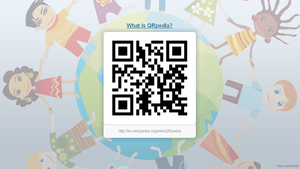
A barcode or bar code is a method of representing data in a visual, machine-readable form. Initially, barcodes represented data by varying the widths, spacings and sizes of parallel lines. These barcodes, now commonly referred to as linear or one-dimensional (1D), can be scanned by special optical scanners, called barcode readers, of which there are several types.

A QR code is a type of two-dimensional matrix barcode, invented in 1994, by Japanese company Denso Wave for labelling automobile parts. A QR code consists of black squares arranged in a square grid on a white background, including some fiducial markers, which can be read by an imaging device, such as a camera, and processed using Reed–Solomon error correction until the image can be appropriately interpreted. The required data are then extracted from patterns that are present in both the horizontal and the vertical components of the QR image.

There are two Norwegian language editions of Wikipedia: one for articles written in Bokmål or Riksmål, and one for articles written in Nynorsk or Høgnorsk. There are currently 622,748 articles on the Norwegian Wikipedia edition in Bokmål/Riksmål, and 168,720 articles on the Nynorsk edition.

The Children's Museum of Indianapolis is the world's largest children's museum. It is located at 3000 North Meridian Street, Indianapolis, Indiana in the United Northwest Area neighborhood of the city. The museum is accredited by the American Alliance of Museums. It is 472,900 square feet (43,933.85 m2) with five floors of exhibit halls and receives more than one million visitors annually. Its collection of over 130,000 artifacts and exhibit items is divided into two domains: Arts & Humanities and the Natural Sciences. Among the exhibits are simulated Cretaceous and Jurassic dinosaur habitats, a carousel, a steam locomotive, and the glass sculpture Fireworks of Glass Tower and Ceiling. The museum's focus is family learning; most exhibits are designed to be interactive, allowing children and families to actively participate.

The Fundació Joan Miró is a museum of modern art honoring Joan Miró located on the hill called Montjuïc in Barcelona, Catalonia (Spain).
WURFL is a set of proprietary application programming interfaces (APIs) and an XML configuration file which contains information about device capabilities and features for a variety of mobile devices, focused on mobile device detection. Until version 2.2, WURFL was released under an "open source / public domain" license. Prior to version 2.2, device information was contributed by developers around the world and the WURFL was updated frequently, reflecting new wireless devices coming on the market. In June 2011, the founder of the WURFL project, Luca Passani, and Steve Kamerman, the author of Tera-WURFL, a popular PHP WURFL API, formed ScientiaMobile, Inc to provide commercial mobile device detection support and services using WURFL. As of August 30, 2011, the ScientiaMobile WURFL APIs are licensed under a dual-license model, using the AGPL license for non-commercial use and a proprietary commercial license. The current version of the WURFL database itself is no longer open source.

Wikimedia UK (WMUK), also known as Wikimedia United Kingdom, is a registered charity established to support volunteers in the United Kingdom who work on Wikimedia projects such as Wikipedia. As such, it is a Wikimedia chapter approved by the Wikimedia Foundation (WMF), which owns and hosts those projects.

Broad Ripple Park Carousel is an antique carousel in The Children's Museum of Indianapolis. It was installed in 1917 at an amusement park near the White River in Indianapolis, Indiana, where it remained until the building housing it collapsed in 1956. The ride's mechanism was destroyed, but the animals were relatively unscathed and put into storage by the park's owners, the Indianapolis Department of Parks and Recreation. The animals were carved by the Dentzel Carousel Company some time before 1900 but were assembled by the William F. Mangels carousel company, which also supplied the engine powering the ride.
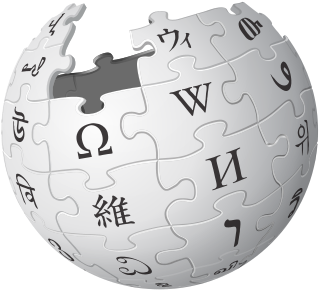
The following outline is provided as an overview of and a topical guide to Wikipedia:
The Monmouth Heritage Trail is a walking route which connects various sights in the town of Monmouth, Wales.
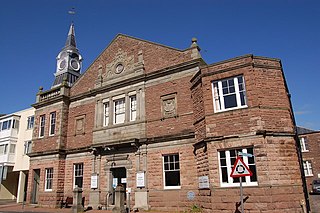
The Rolls Hall, Whitecross Street, Monmouth, Monmouthshire is a Victorian hall, now public library, donated to the town in celebration of Queen Victoria's Golden Jubilee by John Rolls, the future Lord Llangattock. It is a Grade II listed building as of 8 October 2005, and is one of 24 buildings on the Monmouth Heritage Trail.

The Punch House is a public house and hotel located at Agincourt Square, Monmouth, Wales.

Monmouthpedia is a collaborative project linking the online encyclopaedia Wikipedia and the town of Monmouth in Wales.
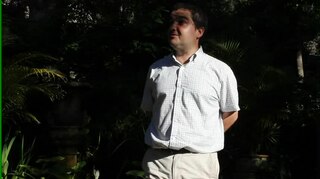
Gibraltarpedia is a project by the Government of Gibraltar, a British Overseas Territory in the south of the Iberian Peninsula, to improve coverage of Gibraltar-related topics on Wikipedia. It builds on Monmouthpedia, an earlier project along similar lines linking Wikipedia and the town of Monmouth in South Wales. The Gibraltarpedia project was announced in July 2012 by the Government of Gibraltar.

A Wikipedian in residence or Wikimedian in residence (WiR) is a Wikipedia editor, a Wikipedian, who accepts a placement with an institution, typically an art gallery, library, archive, museum, cultural institution, learned society, or institute of higher education to facilitate Wikipedia entries related to that institution's mission, encourage and assist it to release material under open licenses, and to develop the relationship between the host institution and the Wikimedia community. A Wikipedian in residence generally helps to coordinate Wikipedia-related outreach events between the GLAM and the general public such as editathons.

Freopedia began as a project to install QRpedia codes at sites around Fremantle, Western Australia to link people to articles on Wikipedia. It has since evolved into a WikiTown project aiming to build comprehensive coverage of Fremantle on Wikipedia.
The following is a timeline of the history of the city of Skopje, North Macedonia.
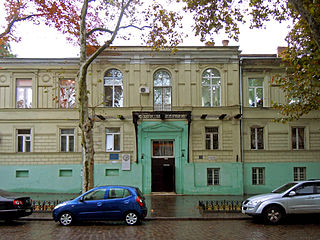
Maraslis's House is at 4 Pushkinska Street in Odesa.

Amarapedia is a collaborative project linking the quarter of Amara in Donostia-San Sebastián and the on-line encyclopaedia Wikipedia, which is focused on the facilities of local information system, covering subjects such as places, buildings, facilities, and streets. Amarapedia is inspired by the Welsh experience of Monmouthpedia and it was a pilot project for future larger-scale projects that took place in the city of Donostia-San Sebastián in 2016, when the city was the European Capital of Culture.
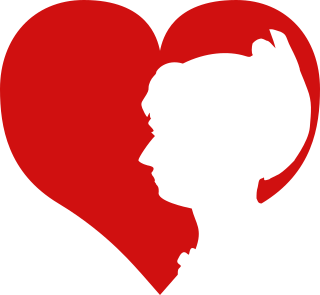
Women in Red is a WikiProject addressing the current gender bias in Wikipedia content. The project focuses on creating content regarding women's biographies, women's works, and women's issues.

